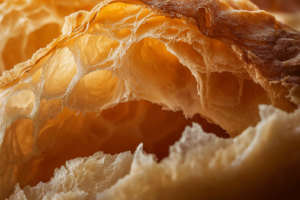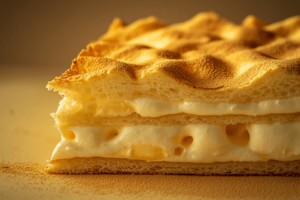Croissants and gipfeli both bring excitement to any breakfast table. They look similar at first glance, but they have unique qualities that set them apart. When you hold one in each hand, you might wonder why they feel slightly different or why their flavors vary. Understanding these differences is helpful if you love trying new pastries or want a taste of European baking at home. In this article, you will learn how croissants and gipfeli evolved, what separates them in terms of ingredients, how bakers shape them, and why each pastry is special. Additionally, you will discover how to enjoy them in several ways, along with tips for storing and reheating. This guide will walk you through every important detail, so you can impress your friends with new baking knowledge or indulge in a more informed way.
A Brief History of Croissants and Gipfeli
Origins of Croissants vs. Gipfeli
Croissants often show up in stories about French culinary heritage. Yet, the idea for their crescent shape comes from a more complicated background. Many accounts link the croissant’s early inspiration to the Austrian kipferl, a centuries-old pastry shaped like a crescent. Over time, French bakers took this idea and refined it. Consequently, the croissant gained fame for its soft, flaky dough made with many layers of butter. Even though France claims the croissant as its signature pastry, its roots remind us of Europe’s shared baking traditions.
Similarly, gipfeli have strong ties to Switzerland. They resemble the kipferl more than the French croissant does, and they often use less butter in the dough. However, modern Swiss bakeries might tweak the recipe. They sometimes use richer dough or special fillings to capture modern tastes. Nonetheless, the word “gipfeli” comes from German-speaking regions of Switzerland, emphasizing the pastry’s pointed, crescent-like shape.
Early Popularity
Croissants reached global recognition by the 19th century. French cafés served them in large quantities, drawing in visitors who craved fresh pastry with their morning coffee. Eventually, croissants spread throughout Europe, then to the United States. In contrast, gipfeli did not achieve the same broad fame outside Switzerland. But they remain a constant presence in Swiss bakeries and households, where people enjoy them daily. Although the world focuses on croissants, Swiss travelers and pastry lovers know that gipfeli deserve a moment in the spotlight.
Croissants and Gipfeli: Key Distinctions
Shape and Appearance
Both pastries form a crescent shape, yet subtle factors make them look different. Croissants usually have large, visible layers and a slightly elongated form. They appear puffier, which showcases the many butter layers. Gipfeli, on the other hand, tend to be smaller and tighter in shape. Their tips often point more sharply, reflecting their origins in Swiss baking. When you see a gipfeli lined up next to a croissant, you may notice that the croissant stands taller and looks flakier. Meanwhile, the gipfeli often appears a bit denser, with fewer visible layers on the surface.
Moreover, the color of the surface can vary. Croissants often have a golden exterior with a slight sheen. Gipfeli might have a lighter or slightly duller finish, especially if the recipe calls for less butter. Still, some modern Swiss bakeries brush their gipfeli with egg wash to give them a more vibrant appearance.
Dough and Ingredients
A croissant’s charm comes from its laminated dough, which involves folding butter into dough multiple times. This process creates many thin layers separated by butter. When baked, the butter steams and puffs up the dough, resulting in a crisp outer layer and an airy interior. High-quality butter is vital, so croissants often have that rich, indulgent taste. Some recipes also include small amounts of sugar or milk to develop a gentle sweetness and slightly tender crumb.
Gipfeli dough, on the other hand, may be less buttery and might include milk, which influences its softer and more compact texture. This dough is still folded, but in many cases, fewer folds are involved. Hence, you get fewer layers and a less dramatic rise. Gipfeli can also contain a bit of sugar or even honey. Consequently, the flavor profile is milder. This quality makes them perfect for those who enjoy a pastry that is not overly rich but still offers a lovely taste.
Taste Profile
The croissant’s flavor is famously buttery. When you tear one open, the delicate center often releases a tempting, creamy aroma. Each bite offers a balance of crisp outer layers and a light, slightly chewy middle. Because butter is so important, the taste can differ based on the quality and amount used. You might notice hints of sweetness, but croissants stay more on the savory side unless they are specifically sweetened or filled with chocolate or almond cream.

Gipfeli, meanwhile, highlight a subtler flavor. They are not as buttery and have a gentle sweetness. In addition, their denser crumb feels more substantial to bite into. This mild character allows them to pair well with savory spreads or sweet jams. Many Swiss locals enjoy sipping a cup of coffee or tea with their warm gipfeli in the morning. In fact, that simple routine forms a big part of Swiss breakfast culture.
Texture and Mouthfeel
Anyone who has bitten into a croissant knows its signature flaky texture. The numerous layers crackle when you tear it in half, sending small, crispy flakes in all directions. After the initial crunch, the inside feels airy and almost melts in your mouth. This balance is a result of precise lamination. The process can be time-consuming, yet the payoff is an irresistible crumb structure.

Gipfeli, though sometimes laminated, lean toward a firmer, tighter texture. You might still see thin layers inside, but not as pronounced. They have a subtle chew, and the surface feels smoother because they do not puff up as dramatically. When you press on a gipfeli, it resists a bit instead of collapsing quickly. In Switzerland, this consistency is admired. It makes the gipfeli perfect for holding spreads, butter, or cheese without falling apart.
Croissant vs. Gipfeli: Cultural and Regional Influences
French Culinary Pride
France takes deep pride in perfecting the croissant. In many neighborhoods, it is a symbol of baking craftsmanship. Patrons can even detect slight differences among bakeries, depending on the flour or butter they use. This friendly rivalry pushes bakers to innovate, leading to new shapes and fillings. Ultimately, the croissant has become an international emblem of French cuisine, making appearances in brunch menus, hotel buffets, and even quick-service chains around the world.
Swiss Daily Rituals
In Switzerland, the gipfeli is woven into everyday life. Locals might buy a gipfeli on their way to work, or share it among colleagues during a mid-morning break. This pastry fits seamlessly into Swiss culture, reflecting the country’s efficient yet warm approach to daily routines. Because Swiss tradition values fresh, high-quality ingredients, many Swiss consumers remain loyal to local bakeries for their daily pastry fix. The gipfeli thrives in these community-based environments, symbolizing comfort and consistency.
Modern Twists
Over the years, bakers have introduced creative variations to these pastries. Croissants get filled with chocolate, almond paste, or even savory ingredients like ham and cheese. Chefs might drizzle icing or glaze them with honey for extra sweetness. Meanwhile, Swiss bakers experiment with gipfeli by adding nuts, seeds, or special flours. Some also incorporate unique fillings such as spinach and feta, or they top their gipfeli with cheese and herbs. These modern ideas reflect a growing desire for variety, appealing to customers who love traditional recipes but also enjoy fresh flavors.
How to Serve and Enjoy Croissants and Gipfeli

Best Ways to Eat a Croissant
Many people like their croissant plain. They pair it with coffee for a simple breakfast or a mid-day snack. Others might slice it open to add butter, jam, or marmalade. This simple tweak intensifies the buttery taste. For a savory option, layering cheese and ham inside creates a small sandwich that is satisfying any time of day. When hosting a brunch, consider offering croissants alongside scrambled eggs, smoked salmon, or fresh fruit. The flaky texture complements lighter foods, letting you create a balanced platter.
Favorite Swiss Combinations for Gipfeli
Swiss families often enjoy their gipfeli with butter and honey, or they dip it in a sweet hot chocolate for a tasty treat. Another common pairing is cheese and cured meats, reflecting Swiss appreciation for hearty snacks. If you want a delicate twist, try adding a thin spread of apricot jam or fruit preserves. This choice will not overpower the pastry’s mild flavor. Because gipfeli are less oily, they also make good travel snacks. Pack them for a day trip or picnic, and you will have a convenient, satisfying bite on hand.
Tips for Pairing
When deciding what to pair with your pastry, consider its base flavor. A croissant’s strong buttery profile can hold its own against mild or bold spreads. Salty or tangy toppings, like goat cheese or a flavorful jam, highlight its richness. Gipfeli, with its gentler taste, pairs well with lighter, more subtle spreads. You could even serve both pastries in a brunch buffet, each with different spreads on the side. Offering variety lets everyone discover their perfect match.
Baking Processes and Techniques
The Art of Laminating Dough
One of the most fascinating parts of making croissants is the laminating process. You start with a lean dough. Then, you wrap a sheet of butter inside it. Next, you fold the dough multiple times, often known as “turns,” and chill it between each turn. This technique ensures the butter does not melt or merge completely with the dough. Each fold multiplies the layers. By the time you finish all turns, you could have hundreds of layers ready to puff up during baking. The result is a croissant’s signature crispness and light center.
Gipfeli might involve fewer turns. Some recipes feature a shortcut approach with fewer folds, which lowers the total number of layers. As a result, bakers can create a tighter dough that remains less flaky. This method is simpler and faster, which appeals to home bakers who might not have the time or technique for classic French-style lamination.
Ingredients for Success
Fresh, high-quality butter is essential for croissants. European-style butter, with higher fat content, produces the best layers. If you use butter that contains more water, the layers can fuse or turn soggy. In addition, a robust yet flexible dough base is important. Because lamination involves rolling, folding, and shaping, the dough must handle stress without tearing.
For gipfeli, you still want to use good ingredients. But the recipe might allow for more flexibility in butter choice. Some bakers even substitute part of the butter with margarine, although purists might object. Milk and a touch of sugar or honey are also common in gipfeli dough. This helps create the mild sweetness that many people love.
Shaping and Proofing
Shaping a croissant involves rolling the dough into a flat sheet, then cutting triangles. You stretch each triangle gently and roll it up from the wide base to the narrow tip. For classic croissants, you place the tip under the rolled pastry to hold the shape during baking. After that, you let them proof until they are soft and slightly jiggly. Finally, you brush them with egg wash and bake until golden brown.
Gipfeli shaping is similar but can differ in how the triangles are cut and rolled. Some bakers roll them more tightly, resulting in a distinctly pointed shape. Others pinch the ends closer or tuck them in to form a neat crescent. Proofing times vary, and some recipes call for a final egg wash or a milk wash that gives a gentle color instead of the deep shine you see on a traditional French croissant.
Storing, Freezing, and Reheating
Storage Tips for Fresh Pastries
Once baked, croissants and gipfeli taste best right away, while the layers are still crispy and warm. If you need to store them, place them in a paper bag or a container that allows some airflow. This helps keep them from turning soggy. Storing them in a sealed plastic bag can trap moisture, making the pastries lose their crunch. If you have to keep them overnight, gently wrap them in foil. However, know that each passing hour can reduce flakiness.
Freezing for Longer Shelf Life
You can freeze both croissants and gipfeli to enjoy them later. Let them cool completely first. Then, wrap them tightly in plastic wrap or place them in an airtight container. For optimal freshness, eat them within one to two months. Thaw them at room temperature when you are ready. If you want to restore some crispness, pop them into a preheated oven at 350°F (175°C) for a few minutes. This method will heat them evenly and bring back some of their original texture.
Reheating for Best Results
To reheat a croissant or a gipfeli, avoid the microwave if possible. Microwaves can make pastries rubbery or unevenly heated. Instead, warm them in a moderate oven or toaster oven for a short time, just until the exterior feels crisp again. Keep an eye on them because they can burn quickly due to their high butter or milk content. When properly reheated, both pastries regain their inviting aroma and taste almost like they just came out of the bakery.
Frequently Asked Questions About Croissants and Gipfeli
What are the two types of croissants?
Traditional croissants and straight croissants are the two most common types. Traditional ones often have a curved shape, while straight ones are sometimes used to distinguish butter croissants from margarine-based pastries in French bakeries.
Is a brioche the same as a croissant?
No, a brioche is not the same as a croissant. Brioche is a soft and rich bread made with eggs and butter, while a croissant is a flaky laminated pastry with many layers of butter.
What is a gipfeli?
A gipfeli is a Swiss pastry shaped like a crescent. It is less flaky than a croissant and often includes milk in the dough. Gipfeli are common in Swiss bakeries and serve as a popular breakfast treat.
What are the different types of gipfeli?
You can find plain gipfeli, whole wheat gipfeli, and even seed-topped varieties. Some bakeries also offer sweet or savory filled versions, such as chocolate, jam, cheese, or spinach.
Conclusion
Croissants and gipfeli share a similar crescent shape, yet each pastry has its own distinct identity. Croissants boast a rich, airy texture and emphasize buttery lamination, making them a hallmark of French baking. Gipfeli, on the other hand, have a tighter crumb with a milder flavor, reflecting Swiss traditions and practical daily routines. Whether you enjoy both or have a clear favorite, these pastries showcase the best of European baking. They also illustrate how a seemingly small difference in ingredients or technique can lead to delightful variations. Now that you know what sets them apart, you can choose the pastry that speaks to your mood or explore both for a world of tastes and textures.

